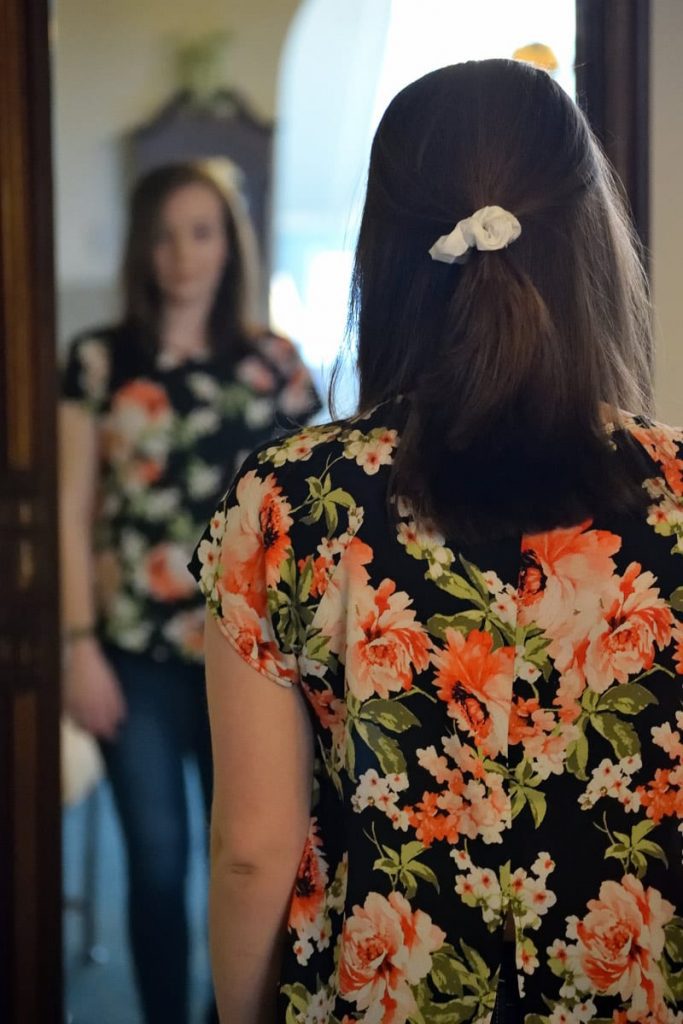I didn’t always care about the way I looked. For most of my childhood, I was more focused on making mud pies and playing with my toys. I don’t think I ever thought much about the way anyone looked, or even the way I looked. All the people I loved were loved for who they were.
Something changed when I reached high school. Maybe part of it was puberty and the other part was to do with the bullying I was going through on a daily basis. But I remember spending so much time staring at myself in the mirror. I’d pull on the fat on my stomach, poke the blemishes on my face and glare at those dark circles under my eyes – I wasn’t sleeping.
I was still a child, I had not yet reached my teenage years and yet suddenly I was self-conscious. I worried about what I would wear, how my hair looked and the acne that was coming at me full throttle. I noticed so many flaws on my body that never phased me before. The thing is, they were not flaws. They never were.
To me, being pretty, being accepted, that was all that mattered because I believed that if I was, it would fix everything. It would fix me.
I spent my teen years fighting with my weight, undereating and then overeating. I would constantly reinvent my identity and spend every penny I had on clothes and beauty products. I wanted so desperately to be like all the pretty girls at school, but I never could be. Everything I tried just made me look so… awkward. I’ve since learned that I never looked right in those identities because they were not me. Those other girls were not me, but that doesn’t mean that I was ugly.
I have spent the rest of my life, up until and even in this moment, finding it hard to come to terms with the body I reside in. I never seem to like my hair, the gap in my teeth or the dips on my hips. I can try to get the perfect body, whiten my teeth or dye my hair, but I am never content.
I looked at a photo of myself when I was around 17. This girl was so thin and so pretty. She was so far from how I ever saw myself but this was photo evidence that I was not the person that I saw in my head. This is when I realized that there was more to my self-esteem – I had body dysmorphia.
This means that I just don’t see myself in the way others see me. It’s not just the way that there may be slight differences in opinion between me and a person looking at me. It’s big differences, like me changing the whole shape of my face and adding 2 stone (28 pounds) to my weight.
I believe that there was a time, when I was about 10 – I was so unhappy. It was a dark time and I think that deep down, the loss of my thin shape, blonde hair, and blue eyes had an effect on me. So even today, I still see myself like that 10-year-old. I can’t see myself any other way.
So when people can’t understand my lack of confidence or when people get annoyed at my inability to take a compliment. It’s nothing to do with attention; it’s nothing to do with trying to get a response – it’s all about the fact that I just can’t see myself in the way that others do.
Though, I have learned one thing over the years. No matter how you look, there will still be people who bring you down. You could give them the stars and they would walk away. What’s important is to learn to accept yourself – you do not need to be accepted by others.
And always remember, you are beautiful regardless of what anyone says. Embrace your body. Own it.
If you or someone you know experiences mental health issues, it is important to seek help from a qualified professional. Our Resource Specialist can help you find expert mental health resources to recover in your community. Contact us now for more information on this free service to our users.
Author Bio: Charlotte Underwood is a writer and mental health advocate from Norfolk, UK. You can follow Charlotte Underwood on twitter at @XCharlotteFoxX
Photo by Taylor Smith on Unsplash
The opinions and views expressed in this guest blog do not necessarily reflect those of www.rtor.org or its sponsor, Laurel House, Inc. The author and www.rtor.org have no affiliations with any products or services mentioned in this article or linked to herein.






Great article! Thank you